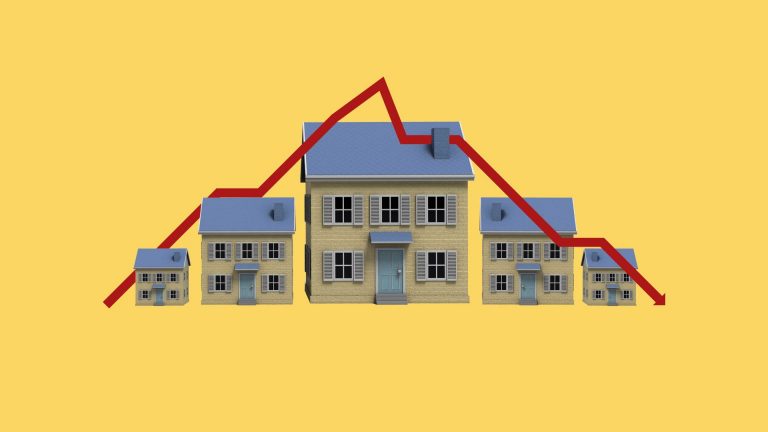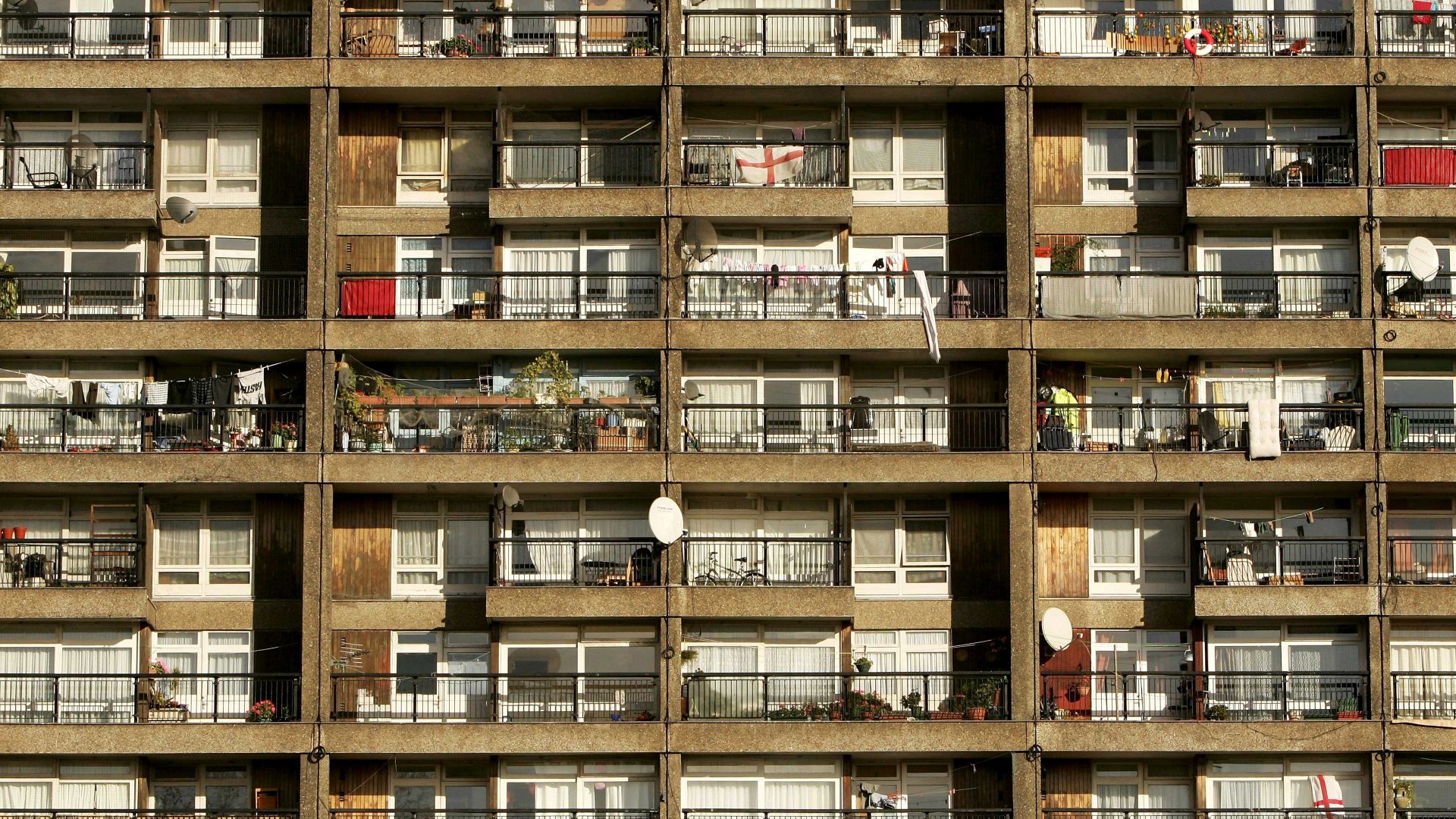London has Europe’s worst housing crisis. The UK’s capital has overtaken other European cities to become the most expensive rental market in the continent (it used to be behind Paris, Dublin and some Scandinavian cities).
This rapid rise has driven a homelessness epidemic: the UK has the highest homelessness rates in the OECD, and most of this is centred on London – with its 65,000 homeless households accounting for 55% of the country’s total.
This is driving very serious misery and poverty at the heart of one of Europe’s most affluent and advanced cities: one in every 21 children are homeless, and many of them face dire conditions in temporary accommodation, which lack basic facilities for mothers to raise children.
What is happening in London is the tip of an iceberg impacting most major European cities. From Lisbon to Oslo, the cost of housing is an increasingly frontline political issue, and one which has been getting worse for years.
Between 2010 and 2022, house prices across the EU rose by 47% and rents by 19%. This growth has rapidly outpaced increases in incomes and causes disruption, displacement, homelessness and generational inequality throughout the continent’s major cities.
How much of the restlessness, dissatisfaction and disgruntlement driving the wave of populism comes down to the fact that so many people can no longer afford a home? Indeed, it is housing – not immigration – that is expected to be the number one issue at the forthcoming Dutch elections.
Like many of our problems, discussion of why we have found ourselves here and what we might do about it remains frustratingly parochial. There is much the UK, and all other European states grappling with this issue, could learn from their neighbours.
Let’s look first to France, where the delivery of social housing is around three times as high as it is in the UK – and comfortably the largest in Europe.
France has built a model based on secure funding, legislation and state support. The French government offers citizens a Livret A investment account, which pays a moderate, tax-free return and has more than 56m investors.
This gives the government a pot of money to invest in socially productive projects which offer a reasonable, unspectacular return. Social housing is a primary destination for this funding, which means the sector is flush with cash and less exposed to the ups and downs of the market.
France also has legislation requiring municipalities to release land for the construction of social housing, in order to balance their housing stock towards a 25% share of public housing – with local administrations facing fines if they fail to.
The French system caters to a range of homes: those on no income, low incomes, middle incomes and those who need extra care, which means there are housing options available for a wider group of people than the UK sector offers homes to.
The country is also taking better care of its existing housing stock. A policy called Second Vie encourages refurbishment over demolition, and there are some incredible examples of buildings which have been given a new lease of life, which in the UK would have been demolished. One of these projects, the Tour Bois le Pretre in Paris, helped win its designers the international Pritzker Prize in 2021 (the equivalent of the Nobel Prize for architecture).
In France, 46% of social housing is in the top bracket for energy performance, compared to 25% in the overall housing stock. The government has prioritised investment in a way the UK hasn’t, and is reaping the rewards. The large supply of social housing helps keep a lid on housing benefit expenditure.
Suggested Reading

The rise of the early downsizers
Other European countries have also built successful models of social housing, with public housing corporations managing hundreds of thousands of homes in the Netherlands and Denmark.
In Amsterdam, 40% of the housing is public, and it is 30% across the Netherlands as a whole. These corporations are tightly regulated and not-for-profit, keeping the homes in decent condition and reinvesting surplus income into maintenance.
A major difference between these countries and the UK is that they have never seen a programme of mass social housing sales, like the Right to Buy scheme, introduced here in the 1980s. That policy saw tenants allowed to buy their homes at a discount, with more than 2m sold. This didn’t just rob us of social housing, it crippled the economic model on which these other countries now rely.
Because social housing rents produce a small profit margin against their management costs, once the debt used to build them is cleared, the model effectively becomes financially self-sufficient.
But this only applies if you keep it until it becomes debt-free, rather than sell it off as we did in the UK. Western Europe is divided in this way: the situation is even worse in Spain and Portugal, where post-war fascist governments either built no social housing, or set it up in such a way that it was automatically converted to private housing within a single generation.
The countries without a large stock of debt-free social housing have a much harder job now of finding the cash to build more.
They are trying, though. Barcelona, where housing issues saw a left wing coalition win control of the mayoralty in the 2010s, has been buying up private blocks in the city and re-letting them as public housing – in an effort to rapidly expand its minuscule stock of public housing.
It is also bringing in much tighter restrictions on AirBnb-style lettings – a scourge of the property market in many European capitals popular with tourists.
Many European countries also make better use of public land than we do in the UK. In Austria and the Netherlands, the state acquires land and ‘zones’ it for use as social housing. This reduces the cost of building it, because social housing providers don’t have to compete with for-profit builders to acquire the land.
Vienna, which has the highest levels of social housing in Europe and some of the highest quality, relies on releasing packages of public land for new developments. In London, by contrast, public land is sold to the highest bidder, with expensive, private housing often developed instead.
Another model which is popular in Europe but largely unexplored in Britain are the movements of co-operative housing and community land trusts (CLTs) – where a community group buys land or properties to mutually own as affordable housing. The Brussels CLT, for example, has been buying up properties and land in the Molenbeek area of the city to provide affordable homes for people who can’t afford the market rates.
These sorts of models are popular in many other European cities. Zurich is a major hub for co-operative housing – where residents buy shares, pay below market rents to stay and expect no capital gain from the property. They are actively supported by the city, through planning law, land release and tax incentives and have become so popular that they now account for one in every five homes in the city. There are some similar movements in the UK, but they remain a tiny, fringe part of the market.
Then there is rent control. Often derided by economists as an inappropriate state intervention which will cut off supply, the comparison of the UK to the rest of Europe actually makes the opposite case.
According to the London School of Economics, the UK sits “at one end of the international spectrum” in terms of rent control – having no restriction whatsoever on what landlords can charge and how quickly they can increase the rent. This contrasts to a range of approaches across Europe, some of which limit rises year-on-year and others set overall price caps. In the Netherlands, a sophisticated system of quality-influenced control requires landlords to benchmark rents to the quality of the property.
If free market economics were to be believed this should make the UK the most competitive marketplace, where consumer choice can drive down prices to a reasonable market rate. Except of course, it hasn’t: landlords have gouged tenants year after year for more and more cash, with extraordinary rent rises post-COVID a key driver of the crisis in London.
The government’s forthcoming Renters’ Rights Bill will introduce a degree of stability to renting in the UK, but no rent control. Given the state we find ourselves in, it is a system which could at least be tried.
But as policymakers grapple with a seemingly unsolvable generational problem of unaffordable housing, they could do worse than look over the English channel. The way we do things here is not the only way to do them.
Peter Apps is contributing editor at the magazine Inside Housing. His book, Homesick: how housing broke London and how we fix it was published on September 25 and can be purchased here









